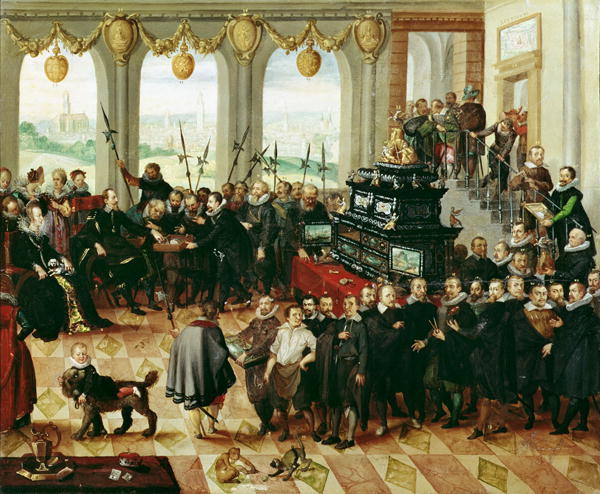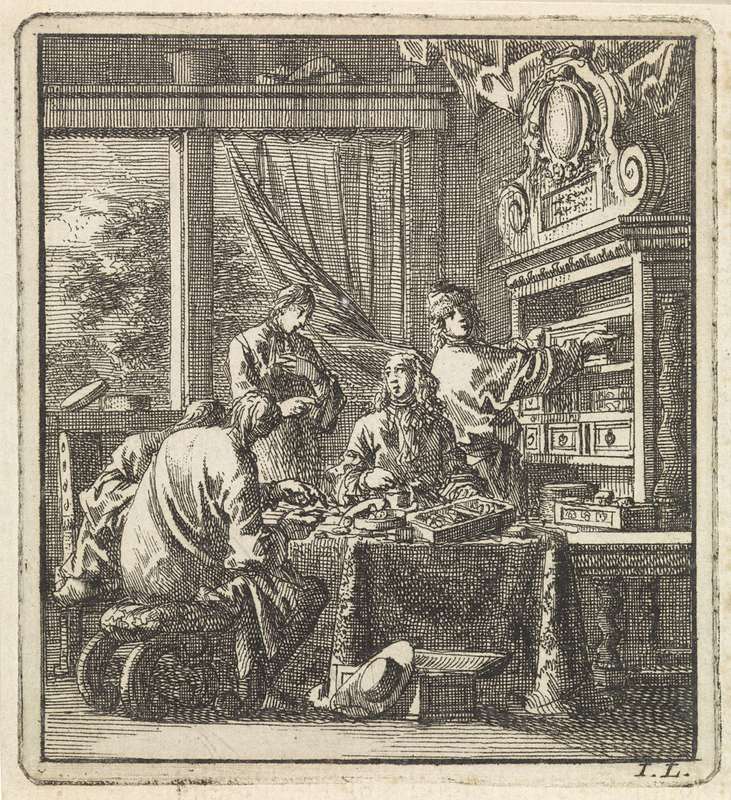Function and Use

Fig. 1. Mozart, Anton. Presentation of the Pomeranian Kunstschrank to Duke Philip II of Pomerania-Stettin (1606-18). 1617. Oil on Panel. Staatliche Museen, Berlin, Germany

Fig. 2. Vijf mannen bekijken de inhoud van diverse laden uit een kabinet. Jan Luyken, wed. Pieter Arentsz & Cornelis van der Sys (II). Print. 1711. Rijksmuseum, Amsterdam.
To describe the function and use of the kunstkast it would be helpful to look at its German relative the kunstshranke (collectors cabinet). The kunstshranke was a similar piece of furniture developed in Augsburg during the 16th century. Although often smaller in size than the kunstkast, the level of ornamental luxury reached in examples by the notable Philipp Hainhofer were no less stunning. As seen in Fig. 1 the presentation of one of Hainhofer's cabinets was an affair that took place among gathered members of the court. Adorned with silver, gold, and precious stones, these cabinets embodied the spirit of the collections held inside. Just as in the larger Kunst-und Wunderkammen rooms, collections of this time were believed to represent a microcosm of the larger natural and man-made universe. Presented as a compact piece of furniture meant that collectors could seek pleasure in the organized display of the drawers with the added mystery of the locked spaces.
Such use can be found depicted Fig. 2. This paper etching by Dutch printmaker Jan Luyken displays a group of five men admiring and discussing the objects within the drawers of a larger cabinet form. The evolution of these collectors cabinet speaks the continued interest and high level of attachment collectors had to the various objects held within their collections. Wonders that could come in the form of ancient coins, precious stones, animal skeletons, talismans, or pre-historic fossils.